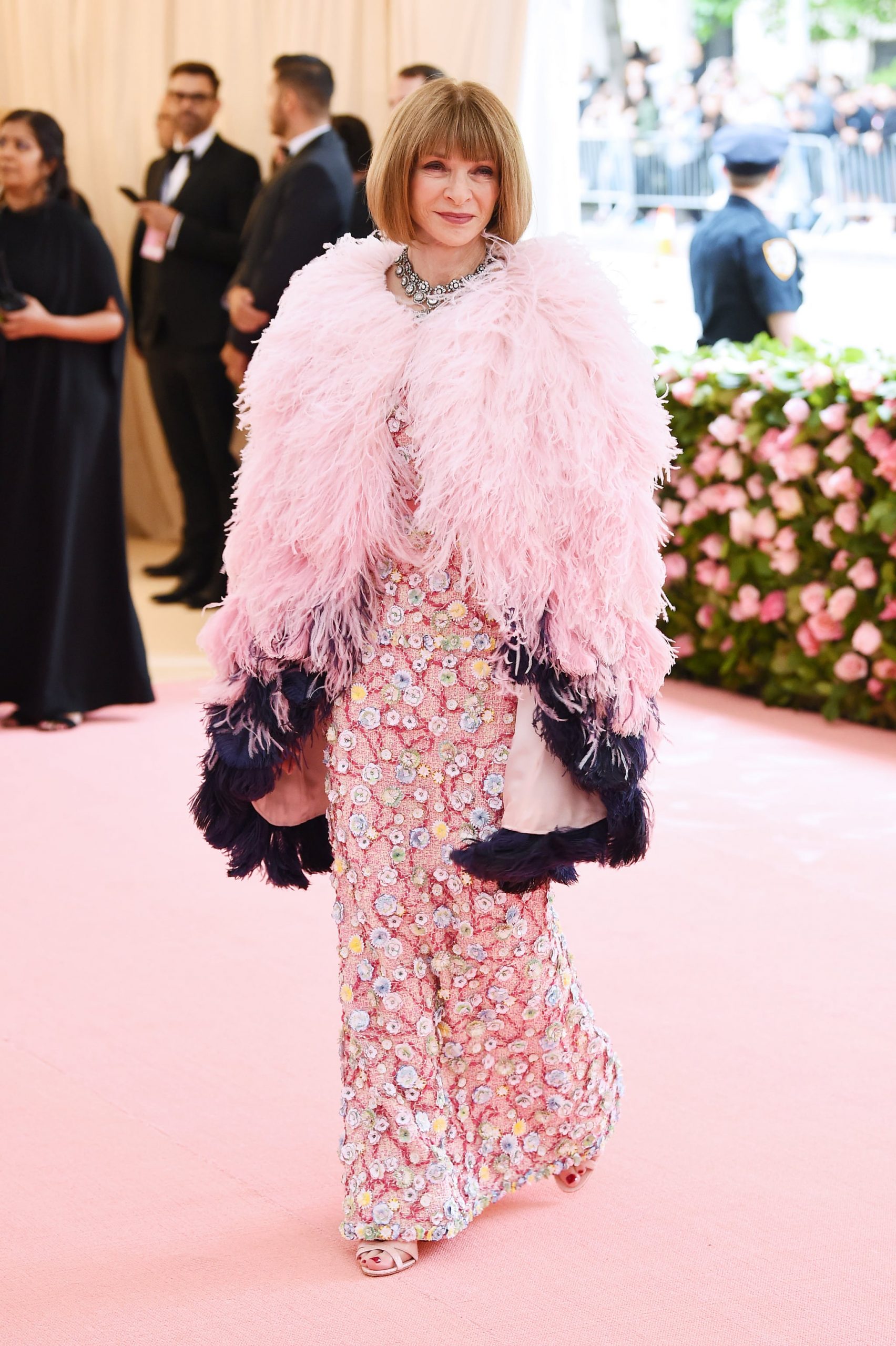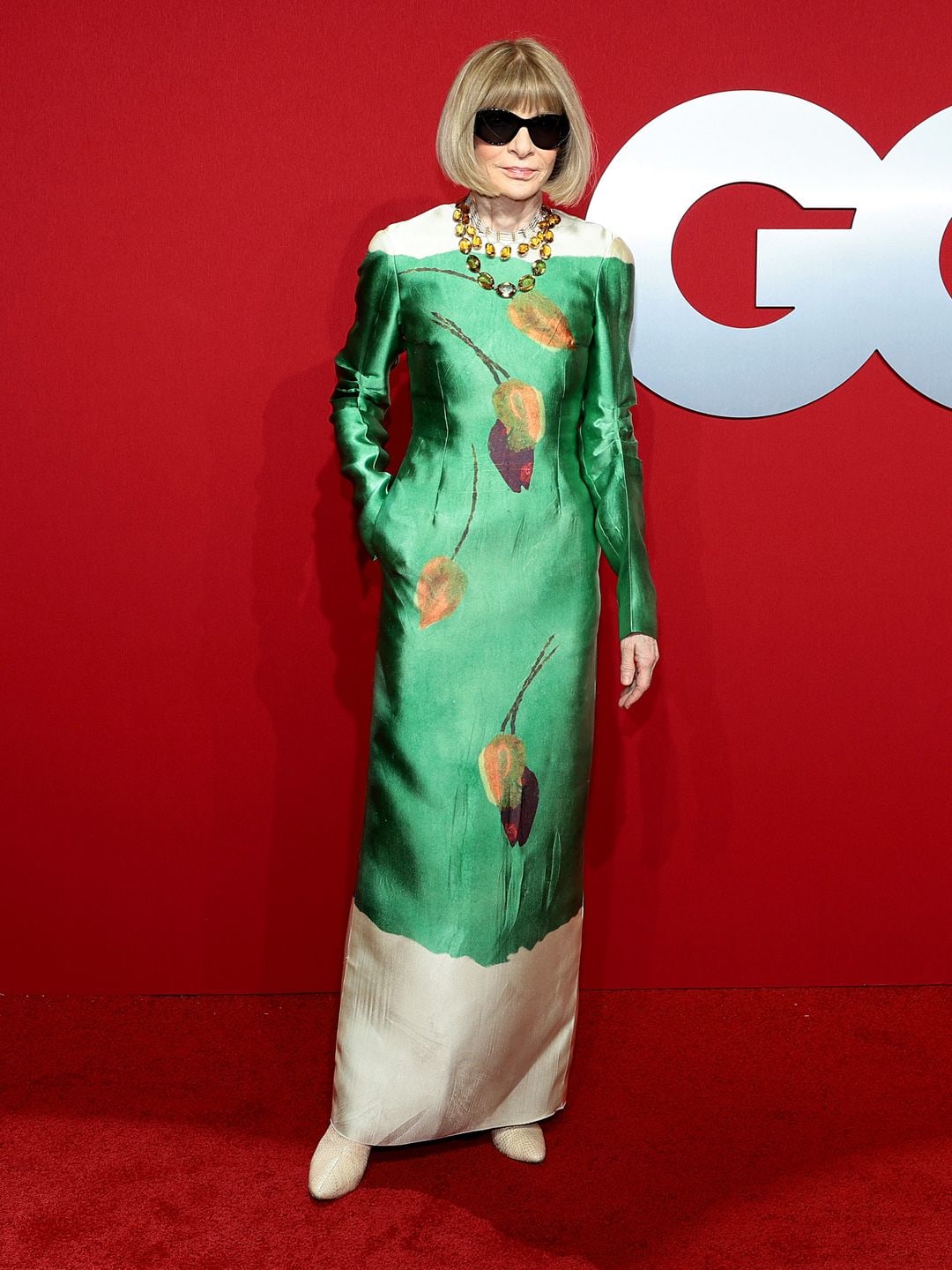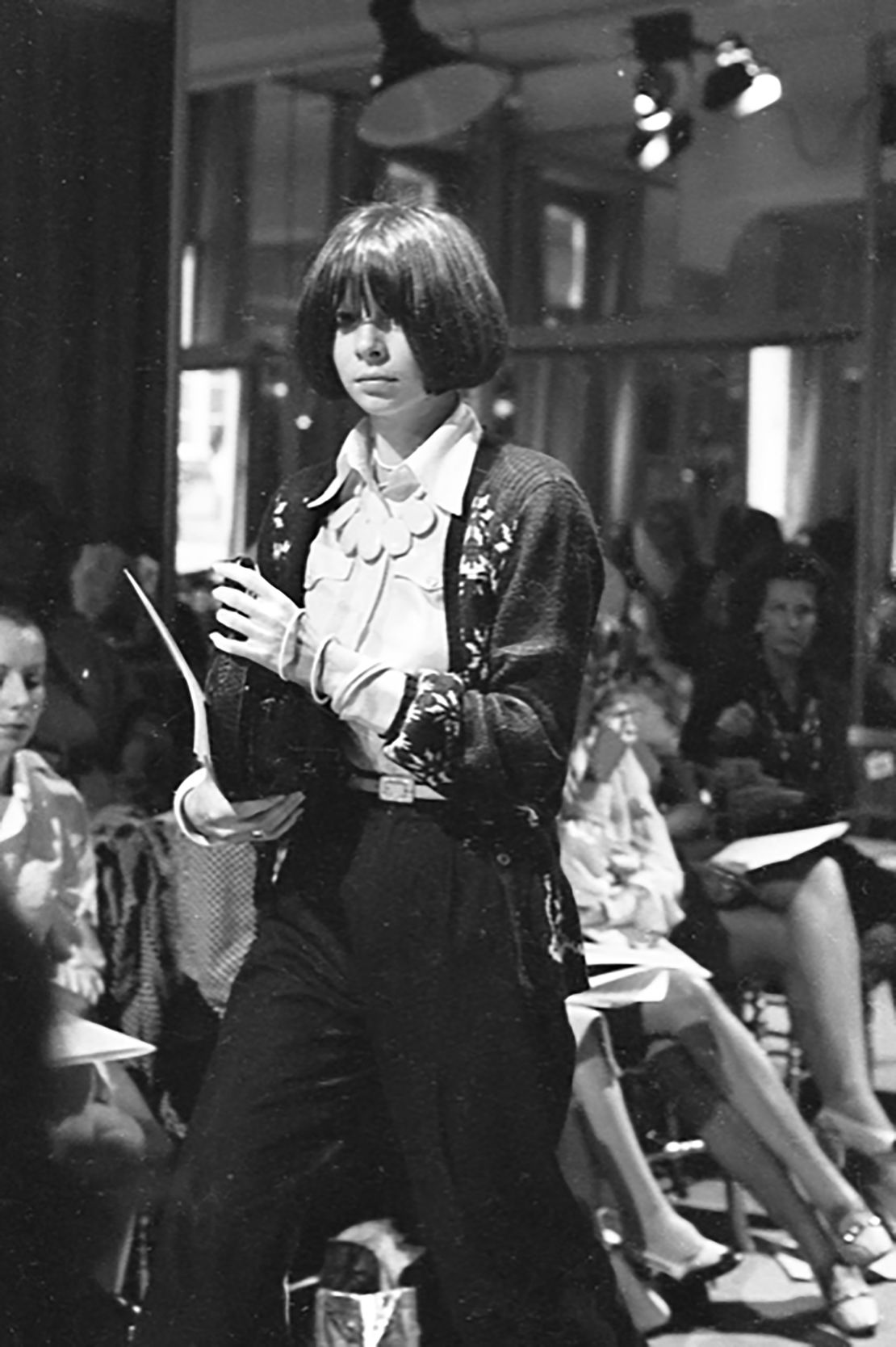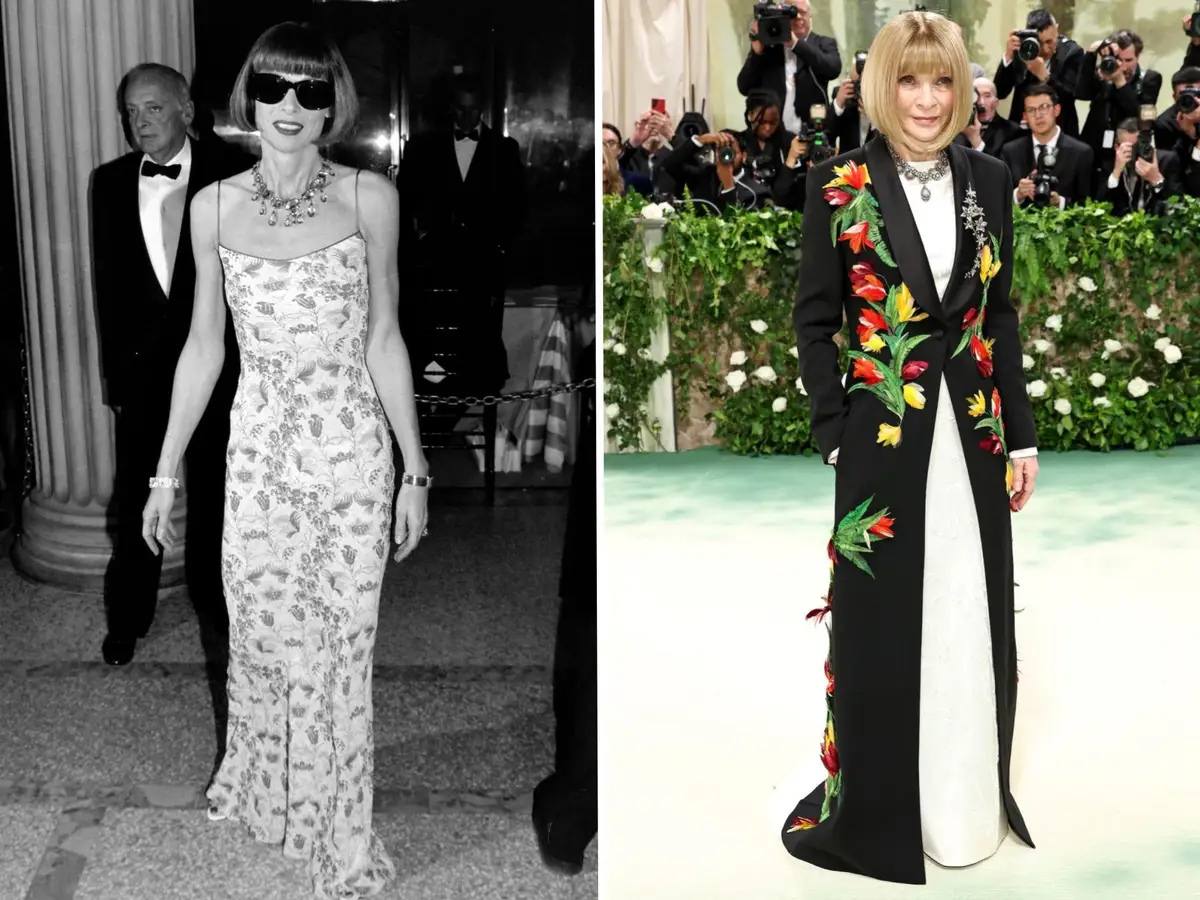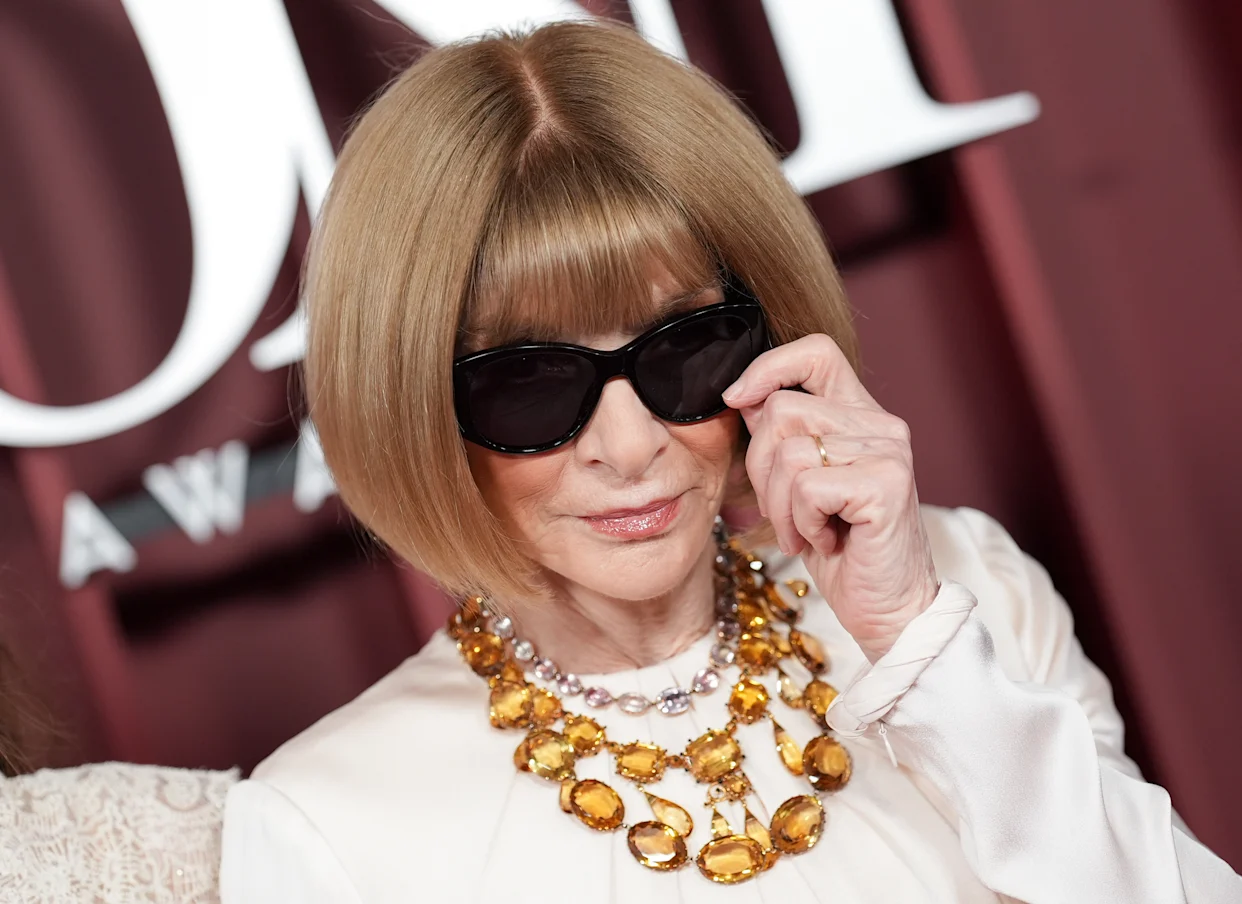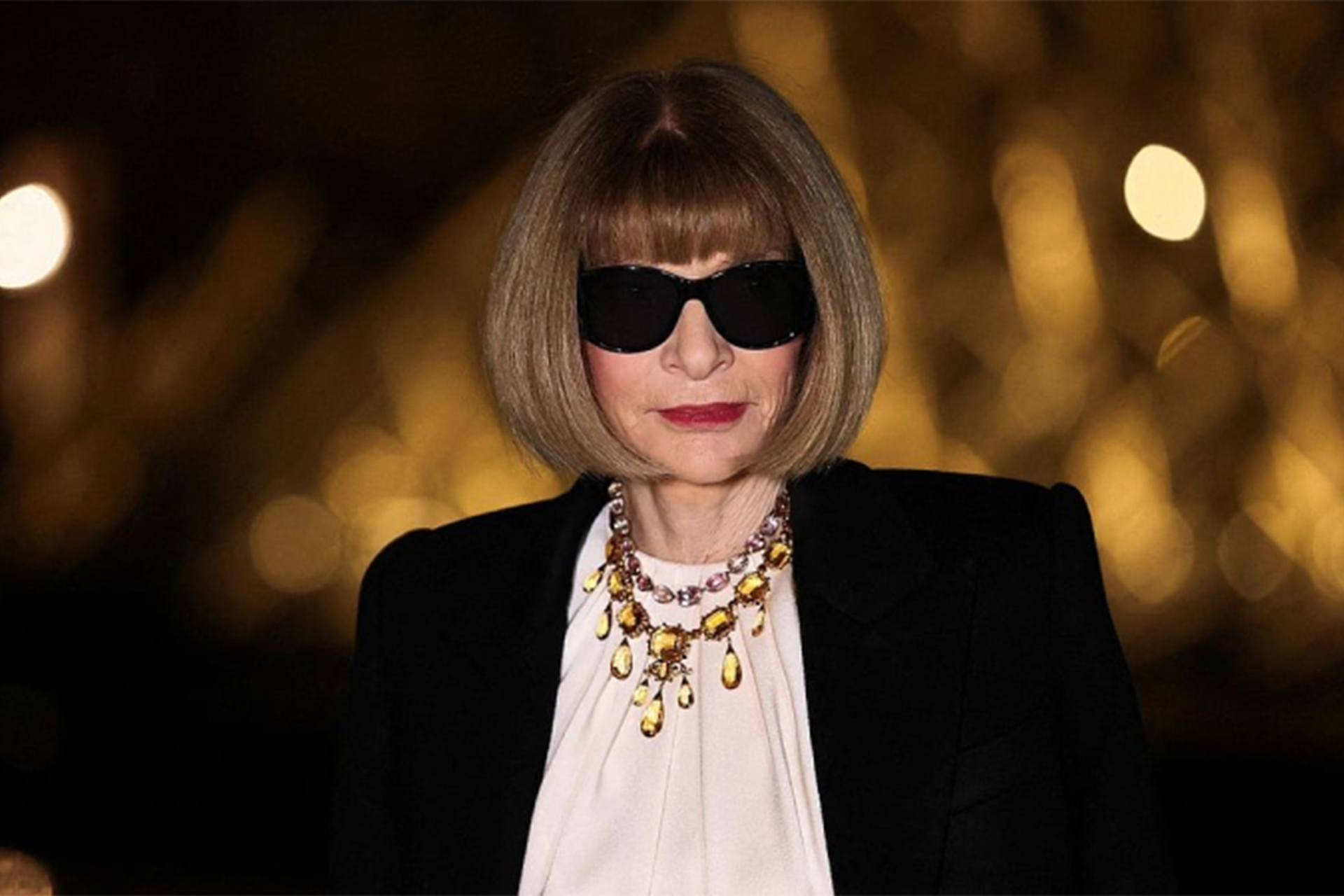
Anna Wintour is stepping down from her role as Editor-in-Chief of Vogue. Having spent over four decades at the magazine, long regarded as the fashion world’s holy book, Wintour may be leaving the editor’s chair, but she’s not taking her signature sunglasses and walking away. She will continue as Vogue’s Global Editorial Director and Chief Content Officer of Condé Nast.
Those with true style don’t change much, and neither did the Ice Queen herself, Anna Wintour, who redefined not just the world of fashion but also the way it was published. Her dark sunglasses made her both instantly recognizable and completely unreadable. “Create your own style” was the advice she gave to anyone asking about fashion. Her signature look never wavered: the iconic bob, the dark sunglasses, the jackets she sometimes draped over her shoulders, and her essential scarves were all part of her unique style.
As ‘the queen of the front row’ at fashion shows, she was never concerned with being seen as intimidating or even frightening. She even earned the nickname “Nuclear Wintour” as her surname resembled the word “winter.” Novels were written about her, and films were made. Most notably, her former personal assistant Lauren Weisberger’s bestselling novel The Devil Wears Prada was adapted into a film of the same name in 2006. People were so intimidated by Anna Wintour that producers and directors struggled to find actors and filming locations for the movie.
THE JOURNALIST’S DAUGHTER WITH NOBLE ROOTS
Dame Anna Wintour was born in London in 1949 to an English journalist father and an American mother. Her father, Charles Wintour, served as editor of the London Evening Standard from 1959 to 1976. Charles came from a family that included many aristocrats and prominent historical figures, and he often consulted his daughter on how to reach the younger generation.
While still a student at North London Collegiate School, Anna Wintour began shortening her skirt hem and pushing back against the school’s dress code. She has worn her now-iconic bob haircut since the age of fourteen. Anna Wintour’s interest in fashion began in her teens, and she eventually dropped out of high school. She decided to pursue a career in fashion journalism, but before that, her father had recognized her passion and helped her land her first job at the iconic boutique, Biba. The following year, Anna interned at Harrods and, at her family’s insistence, enrolled in fashion courses. Yet her passion for fashion lay not in creating it, but in wearing and critiquing it. As a result, she left that training as well. Her media career began when her older boyfriend, Richard Neville, introduced her to Oz magazine.
In 1970, she began her career in fashion journalism as an assistant editor at Harper’s & Queen in the United Kingdom. While still very young, she caught attention with the unconventional projects she took on.
MOVING TO NEW YORK
After a career in England marked by frequent clashes with her colleagues, she decided to continue her career in New York. In 1975, she became a junior fashion editor at Harper’s Bazaar. She always brought an innovative approach to fashion shoots, but that approach led to her being fired just nine months into her first job in New York. Shortly afterward, she became fashion editor at Viva magazine, where her reputation as a demanding and difficult boss began. When the unprofitable magazine shut down, she spent the next few years shuttling between New York and Paris with her French record producer boyfriend. In 1980, she returned to work as fashion editor at Savvy magazine. The following year, she took on the same role at New York magazine. When she put actress Rachel Ward on the magazine’s cover, she broke one of the golden rules of fashion publishing: for the first time, a fashion magazine cover featured not a model but an actress. She became the person who introduced the idea of putting celebrities on fashion magazine covers to the fashion world.
Around that time, she went to interview Vogue’s editor‑in‑chief, Grace Mirabella. The interview ended with Wintour telling Mirabella, “I want your position.”
THE ULTIMATE TARGET: VOGUE
In 1983, Anna Wintour sat down with Vogue’s publisher, Condé Nast. She pushed for double the salary and snagged the newly created position of creative director at the magazine, then led by Editor‑in‑Chief Grace Mirabella. Without the editor‑in‑chief’s knowledge, she made numerous changes, challenging authority and leaving staff caught in the middle of the battles she sparked.
At that time, she began a long‑distance relationship with David Shaffer, a child psychiatrist in London (they married in 1984). She had often ended relationships for the sake of her career, and her career for the sake of her relationships.
When the editor of Vogue UK retired in 1985, Anna Wintour took over the role. She put such pressure on her team that they referred to that period, in a nod to her surname, as “The Winter of Our Discontent.”
Since her time at Savvy, she had been targeting a new type of woman who was career‑driven and financially independent. She read the market correctly.
TEAR DOWN THE COVERS, “WINTER” IS COMING
When Vogue began losing ground to the American edition of Elle, Anna Wintour was called back to New York a few months later. Interestingly, Elle had also considered her to head its U.S. edition. After making major changes to the magazine’s staff, Wintour took the helm at Vogue. As soon as she did, she continued her cover revolution. The old Vogue had put only the faces of famous models and expensive brands on its covers, while the new Vogue featured lesser‑known models or famous actors, showing more of their bodies and mixing inexpensive, street‑style pieces with luxury brands. On her very first cover in November 1988, the 19‑year‑old, little‑known model Michaela Bercu appeared wearing a pair of faded $50 jeans with a $10,000 jeweled T‑shirt. It was the first time jeans had ever appeared on the cover of a fashion magazine. The change was so unexpected that a printer called the magazine, thinking there had been a mistake with the cover photo.
THE DEVIL WEARS… HOW MANY BRANDS?
And so began the “Winter Legend,” which went on to influence not only fashion but also cinema and many other branches of the visual arts.
Anna Wintour was most often accused of using the magazine to shape the fashion industry and imposing her own elitist views on femininity and beauty. She drew the ire of animal‑rights activists for promoting the use of fur.
Although she didn’t care for The Devil Wears Prada novel or film, she didn’t shy away from attending the movie’s premiere, her presence sending a chill through the room.
This high school dropout had barely vacated the editor‑in‑chief’s chair at Vogue when news broke that a sequel to The Devil Wears Prada would be filmed. Meryl Streep, who starred in the first film, said she suffered during filming and in her time off set while preparing for the role through method acting, and even fell into depression because of the character she played. Clearly, Anna’s winter can chill places where she is not even physically present. I felt a shiver myself just writing about her.
